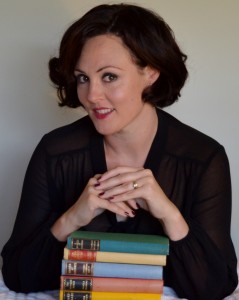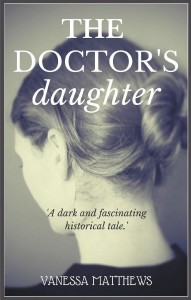Female Friendships in Literature
 Men have dominated the friendship scene in books throughout literary history. Pip and Herbert, Sherlock Holmes and Dr. Watson, Frodo and Sam, Harry Potter and Ron Weasley, Romeo and Mercutio. The list goes on and on. Straight forward, no nonsense bromance at its best. Delve into the archives for a history of female friendships however, and the water gets muddy.
Men have dominated the friendship scene in books throughout literary history. Pip and Herbert, Sherlock Holmes and Dr. Watson, Frodo and Sam, Harry Potter and Ron Weasley, Romeo and Mercutio. The list goes on and on. Straight forward, no nonsense bromance at its best. Delve into the archives for a history of female friendships however, and the water gets muddy.
Broadly speaking, female-led literature focuses on three main categories of women, the way they relate to one another in their stories is easily defined.
SOLO SUPERGIRLS – The powerful but isolated heroines such as Alice in Wonderland, Dorothy Gale, Daenerys Targaryen and Alma Whittaker are just some suitable examples from past and present. Women and girls who strike out, brave and individual to the end. They may pick up friends on their journeys, most often males, but ultimately they reach their goals alone. Other women are considered a threat or appear only as transient mother figures.
THE SISTERHOOD – Often the female friendships that do find their way into literature are based around a genetic bond that brings two or more women back together whatever adversity they face or trials test their friendships. Think of The March sisters, Cinderella’s close knit step sisters, Merricat and Constance Blackwood and the Dashwood girls.
FRIENDS TO THE END – These girls enjoy honest, open, heart-warming friendships. The band of women in Mary McCarthy’s The Group paved the way for Carrie Bradshaw and her glossy crew. Minny, Aibileen, and Skeeter pull together as they face personal battles and challenge racism in 1960’s Mississippi. The lifelong link between Ferrante’s Lila and Elena sees two girls come together as children and remain close into adulthood.
In spite of these examples, many will still argue that the number of female friendships in literature runs a distant second to the countless male buddy stories. So, is there a deliberate plot to exclude female friendships from the literary landscape? Or is the reality that solid single sex alliances are hard to find let alone maintain through all of life’s challenges and changes?
 In my own experience as a writer, I am aware that I can only write what I know or have a desire to understand. After losing my mother when I was aged 11 and my grandmother a year later, positive female influences in my life quickly dwindled. Women to that point had taught me (amongst other things) that they were caregivers, linchpins for social arrangements and family connections, and gateways to acceptance and friendship. Once I was left in a predominantly male household I struggled to find my way and often struggled with female friendships.
In my own experience as a writer, I am aware that I can only write what I know or have a desire to understand. After losing my mother when I was aged 11 and my grandmother a year later, positive female influences in my life quickly dwindled. Women to that point had taught me (amongst other things) that they were caregivers, linchpins for social arrangements and family connections, and gateways to acceptance and friendship. Once I was left in a predominantly male household I struggled to find my way and often struggled with female friendships.
The warm fuzzy influence of the women I had known was quickly replaced by an all-girl gang of bullies and a fickle bunch of besties who would come and then go again, mostly in a bid to avoid getting caught out by the bullies themselves. I didn’t have any sisters and I couldn’t help but feel that the women remaining in my life didn’t belong to me, nor I to them. My teenage years became a bit of a battleground as I tried to figure out who to idolise and emulate, who to trust and who to lean into when things were rough. It’s not that I didn’t want female friends, it was that I genuinely lost my ability to relate to girls and women.
So, when it came to writing the female friendship that runs through my novel The Doctor’s Daughter, I found it challenging. How do you write what you don’t fully understand? In my case, exploring the partnership between these two equally intelligent but very different women forced me to examine my own relationships with females and follow my curiosity about the comforts of a strong friendship – the rules and boundaries that support such a connection. I joined my characters, Marta and Elise, as they too figured things out, and I learned a few things for myself along the way.
And so I am left wondering, perhaps there is not so much a deliberate attempt to exclude positive female friendships in literature. Perhaps writers just experience the world that way and write what they know or seek to understand. Surely one of the best ways to tip the balance is for each of us to be accountable for the way we interact with the women and girls in our own lives. To build positive, empowering, trustworthy connections with as many women as possible. That’s got to be a great place to start right?
I am delighted that my own daughters will come of age just as a new generation of gal pals is emerging. A number of exciting women writers such as Rainbow Rowell, Lena Dunham, Tiny Fey, Louise O’Neill and others will no doubt give my girls and yours plenty of material to inform their own expectations of and responsibilities to their friendships. Hopefully, I too have joined the ranks of female authors writing women who ultimately find love, support and cause for celebration in the arms of their girlfriends, sisters, mothers and other empowering female role models. I certainly tried to do so with The Doctor’s Daughter and am planning to do so again in future novels.
—
Vanessa Matthews works as a freelance copy writer and marketing consultant, and is registered as a mentor with Arts Emergency and lives in the South West of England with her husband and four children.
Her debut novel The Doctor’s Daughter is available in paperback and Kindle edition at Amazon UK, Amazon US and Barnes & Noble, as well as Amazon sites worldwide.
Follow her on twitter @VanessaMatthews
Category: Contemporary Women Writers, On Writing
Comments (8)
Trackback URL | Comments RSS Feed
Sites That Link to this Post
- The Doctor’s Daughter | Murder Underground Broke The Camel's Back | November 5, 2015


























I, too, felt close female friendships were neglected in fiction. So, I wrote my own three novels featuring that special relationship among three boomer age women. The first book covers fifty years, the second takes place in twenty-two days, and the third follows up events occurring in their lives over the next year and a half. While written as a series, each book can be read as a stand-alone.
Absolutely. Here’s my contribution to the list:
Dumped: Stories of Women Unfriending Women, She Writes Press, 2015 Anthology including Ann Hood, Jacquelyn Mitchard, and 23 other women writing on the loss of female friendship. Edited by Nina Gaby
Thank you for this post which really resonates with me and my writing. I think you’re spot-on, building the relationships is the first place to start. I have been lucky on the female friendship front. Like any relationship – like romantic relationships – these relationships are deep, each is unique and they can be fraught with hurt (like the bullying you describe), they change over time and they can also bring deep familial joy. How wonderful is it that now, in this era of women putting one another down on social media and through the cult of celebrity there are writers, like you, and hopefully like me, who recognise that female friendship is a real and valid means for fulfilment? That it is an element of life that gives depth to our literature? I very much look forward to reading your book, and happy writing.
I love your perspective and it gives much room for improvement in the book arena. I will be looking up your book as well! It sounds like a good read!
Thank you Raylynn, it was lovely to read your comment. I’m so glad this article and my novel have resonated with you. That’s why I enjoy writing. It’s a wonderful way to connect. 🙂
I am so impressed that you are doing all that you do while also parenting four children. Not an easy feat. I’m going to put your book on my to-read list. … I’m the third of three sisters born at fourteen-month intervals. We lost both our parents by the time I was eleven years old. I am lucky that I’ve had my sisters all my life as companions and friends. We help each other through the difficult times and share the good times. Even so, not having the constant, loving presence of a mother while growing up (she died when I was two) has made some aspects of female relationships more difficult. And when I became a parent, it felt like had to figure everything out from scratch, having no good references from childhood where I could say to myself, “Oh yeah, this is how mom did it. I know exactly what to do.” I published a memoir about my childhood years and recently published an anthology on sisterhood, Sisters Born, Sisters Found. Writers from every continent except Antarctica contributed memoirs, essays, short stories and poems about either sisters from the same family or women who bonded as sisters. There are even some contributions from men who wrote about the sister bond. The book just won the top prize in the women’s issues category of the 2015 Next Generaiton Indie Book Awards, so I feel that in my own small way I’m contributing to the depiction of female relationships in literature.
Thank you so much for your kind comment and congratulations on the success of your own book, it sounds fantastic. I will certainly take a look. I know all of the feelings you describe and yes, it seems you have certainly made your contribution. Bravo Laura!